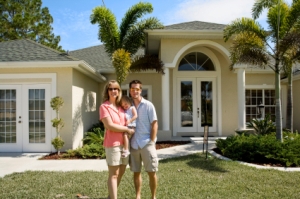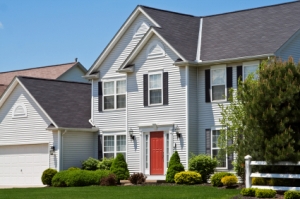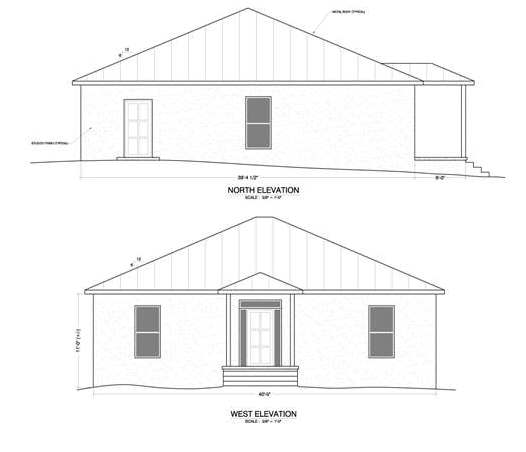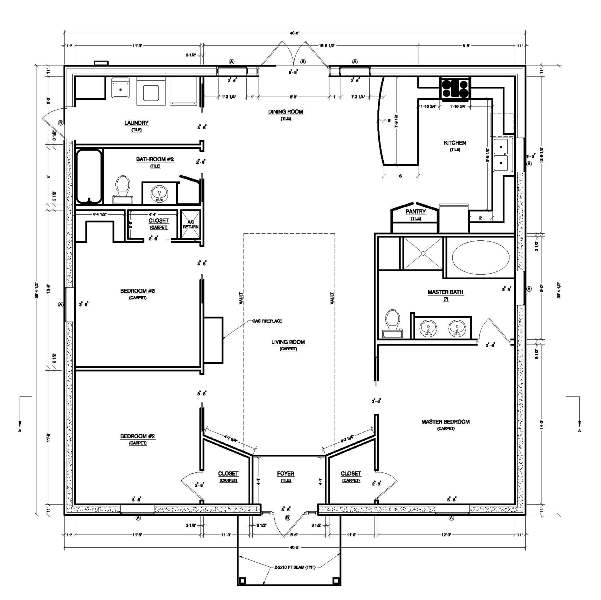Design Considerations for ICF House Plans
ICF house plans can be designed to look just like a house with conventional wood framing.
ICF blocks provide even more design flexibility, such as contours and curves.
However, window and door placement needs to be carefully thought out because once the concrete is poured, it is impossible to add or change a window's or door's placement.
Interior and exterior finishes can easily be applied using wall ties.
Stucco is a popular exterior finish with ICF homes, but any other type of siding or finish can be used.
See the following two photos for examples.


As far as interior design, ICF blocks accommodate any of the popular design features, such as high walls, long floor spans, and cathedral ceilings.
Key Considerations for ICF House Plans
Because there are many different ICF block manufacturers, it is important to decide on one specific brand before having a designer begin creating your ICF home plan. Once you decide on one brand of ICF block, the designer can then create a plan that uses that specific brand of block most efficiently.
Depending on your budget, you may choose to use ICF blocks for your interior walls as well as your exterior walls. This can add cost, but it also adds even greater noise reduction and energy efficiency. However, in our experience, there isn't enough advantage to justify the added cost of interior ICF walls. But it's a personal preference.
If you find a plan online that you like, but it uses 2x4 or 2x6 construction, don't worry. An architect or draftsman can customize that plan to reflect ICF walls.
Following is one of our listed draftsman's ICF home plans that uses the ECO-Block brand of ICF forms. The exterior walls are almost a foot thick! Compare that to walls in wood-frame construction, which are only 4 or 6 inches thick.
In addition to the safety and security that these thick, solid walls offer, homeowners who choose this plan can also expect to save roughly 50% on their insurance and energy costs.
Another benefit is significantly reduced noise...a major consideration in urban areas.
Learn more about the
advantages and disadvantages of ICF homes.
And see lots of photos of an ICF home under construction here.
Learn about using ICF for a foundation here.

Contact the designer
if you'd like to learn more about this plan,
or to inquire about their design services.
Return from ICF House Plans to Concrete House Plans.
OR
Return from ICF House Plans to the Home Page.






